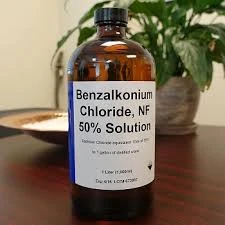Exploring the Uses and Benefits of Bit Isothiazolinone in Various Industries
The Role of Bit Isothiazolinone in Modern Industries
Bit isothiazolinone, often referred to simply as BIT, is a widely used biocide that finds its applications across a variety of industries due to its effective antimicrobial properties. As a member of the isothiazolinone family, BIT is particularly valued for its ability to combat bacteria, fungi, and other microbial threats. This article explores the chemical properties, applications, safety considerations, and environmental impact of BIT isothiazolinone.
Chemical Properties and Mechanism of Action
BIT isothiazolinone is a heterocyclic compound characterized by a five-membered ring containing both nitrogen and sulfur atoms. This structure allows BIT to disrupt cellular functions in microorganisms effectively. It functions by inhibiting key metabolic processes, leading to cell death in bacteria and fungi. The biocidal activity of BIT is enhanced by its ability to penetrate microbial cell walls, making it a potent agent against a wide range of pathogens.
Applications Across Industries
BIT is primarily used as a preservative in various products, including paints, coatings, adhesives, and personal care items. In the coatings industry, for example, BIT helps prevent microbial growth that can lead to surface degradation and product failure. Similarly, in personal care products such as shampoos and lotions, BIT acts as a preservative, ensuring that these products remain stable and safe for consumer use over time.
Moreover, BIT is employed in the paper and pulp industry, where it helps control bacterial and fungal growth during the manufacturing process. In the oil and gas sector, BIT is used in hydraulic fracturing fluids, where it effectively inhibits microbial-induced corrosion and biofouling.
Safety Considerations and Regulatory Status
bit isothiazolinone

While BIT is recognized for its effectiveness, it is crucial to consider safety and toxicity concerns. Prolonged or excessive exposure to BIT can cause skin irritation and allergic reactions in some individuals. For this reason, regulatory bodies have established guidelines for its use, ensuring that it is employed at concentrations that minimize potential risks to both human health and the environment.
The European Union's biocidal products regulation (BPR) and the U.S. Environmental Protection Agency (EPA) have both reviewed BIT's safety profile. As a result, BIT is often included in various product formulations with specific concentration limits to ensure safety for consumers and workers alike.
Environmental Impact
The environmental impact of BIT is an area of growing concern. As with many biocides, there is potential for BIT to contribute to the development of microbial resistance, which could undermine its effectiveness over time. Additionally, studies indicate that improper disposal and runoff from products containing BIT can lead to toxicity in aquatic ecosystems.
To address these concerns, companies are encouraged to adopt best practices in product formulation and disposal. Innovations in biocide technology may also lead to the development of alternative agents that deliver similar efficacy while posing lower risks to the environment.
Conclusion
BIT isothiazolinone plays a vital role in modern manufacturing processes, serving as an effective biocide in various industries. However, while its benefits are clear, it is essential to navigate the challenges related to safety and environmental impact carefully. By adhering to regulatory guidelines and developing safer practices, industries can continue to utilize BIT while safeguarding both public health and the environment. As the quest for sustainable practices continues, BIT's role in biocide applications will evolve, reflecting a balance between efficacy and ecological responsibility.
-
lk-319-special-scale-and-corrosion-inhibitor-for-steel-plants-advanced-solutions-for-industrial-water-systemsNewsAug.22,2025
-
flocculant-water-treatment-essential-chemical-solutions-for-purification-processesNewsAug.22,2025
-
isothiazolinones-versatile-microbial-control-agents-for-industrial-and-consumer-applicationsNewsAug.22,2025
-
scale-inhibitor-key-solutions-for-water-system-scale-preventionNewsAug.22,2025
-
organophosphonates-versatile-scale-inhibitors-for-industrial-water-systemsNewsAug.22,2025
-
scale-and-corrosion-inhibitor-essential-chemical-solutions-for-water-system-maintenanceNewsAug.22,2025





